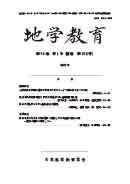Volume 74, Issue 1
Displaying 1-4 of 4 articles from this issue
- |<
- <
- 1
- >
- >|
Original Articles
-
2022Volume 74Issue 1 Pages 1-11
Published: January 25, 2022
Released on J-STAGE: February 09, 2022
Download PDF (4609K) -
2022Volume 74Issue 1 Pages 13-30
Published: January 25, 2022
Released on J-STAGE: February 09, 2022
Download PDF (9630K) -
2022Volume 74Issue 1 Pages 31-43
Published: January 25, 2022
Released on J-STAGE: February 09, 2022
Download PDF (827K)
Technical Article
-
2022Volume 74Issue 1 Pages 45-58
Published: January 25, 2022
Released on J-STAGE: February 09, 2022
Download PDF (8146K)
- |<
- <
- 1
- >
- >|
